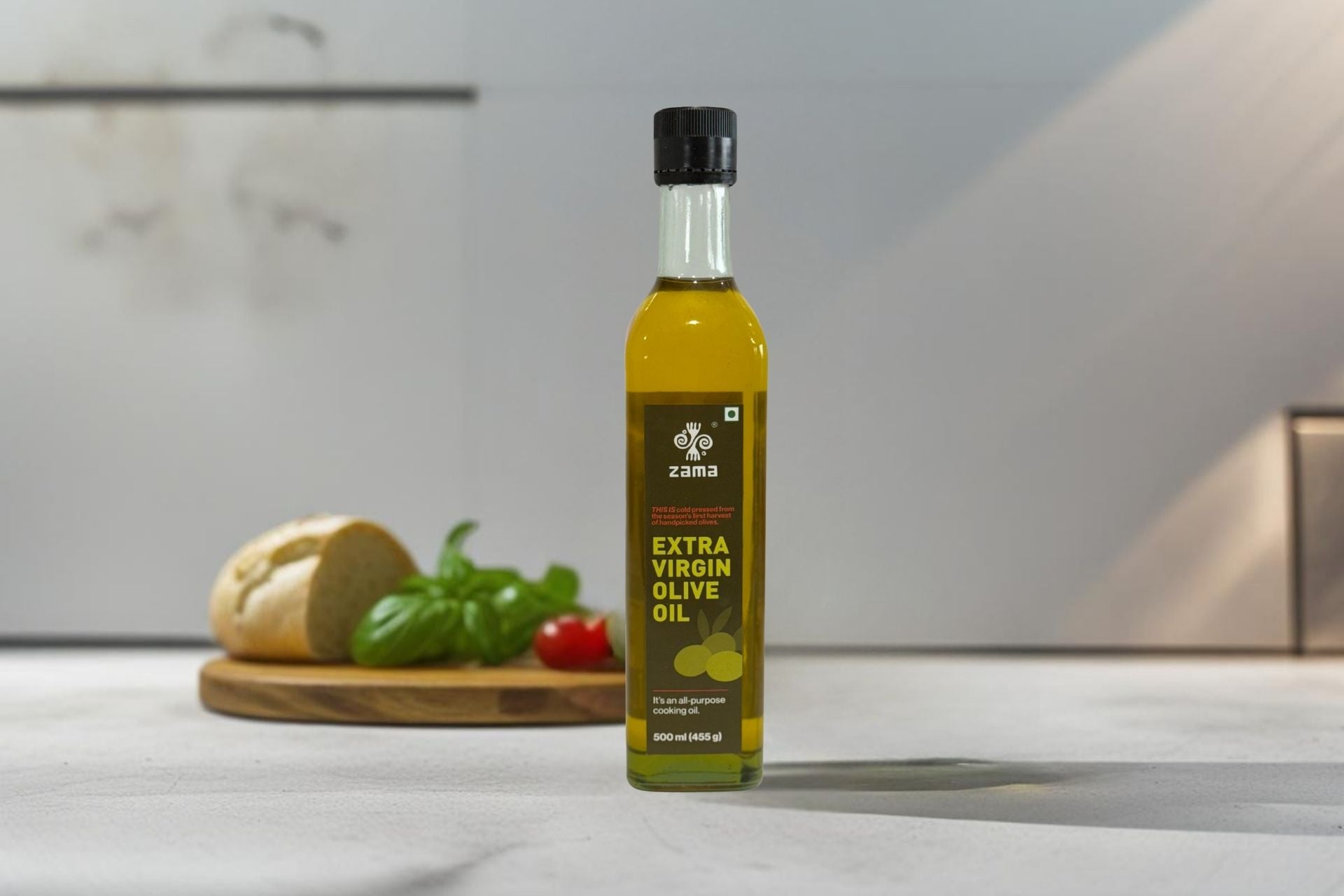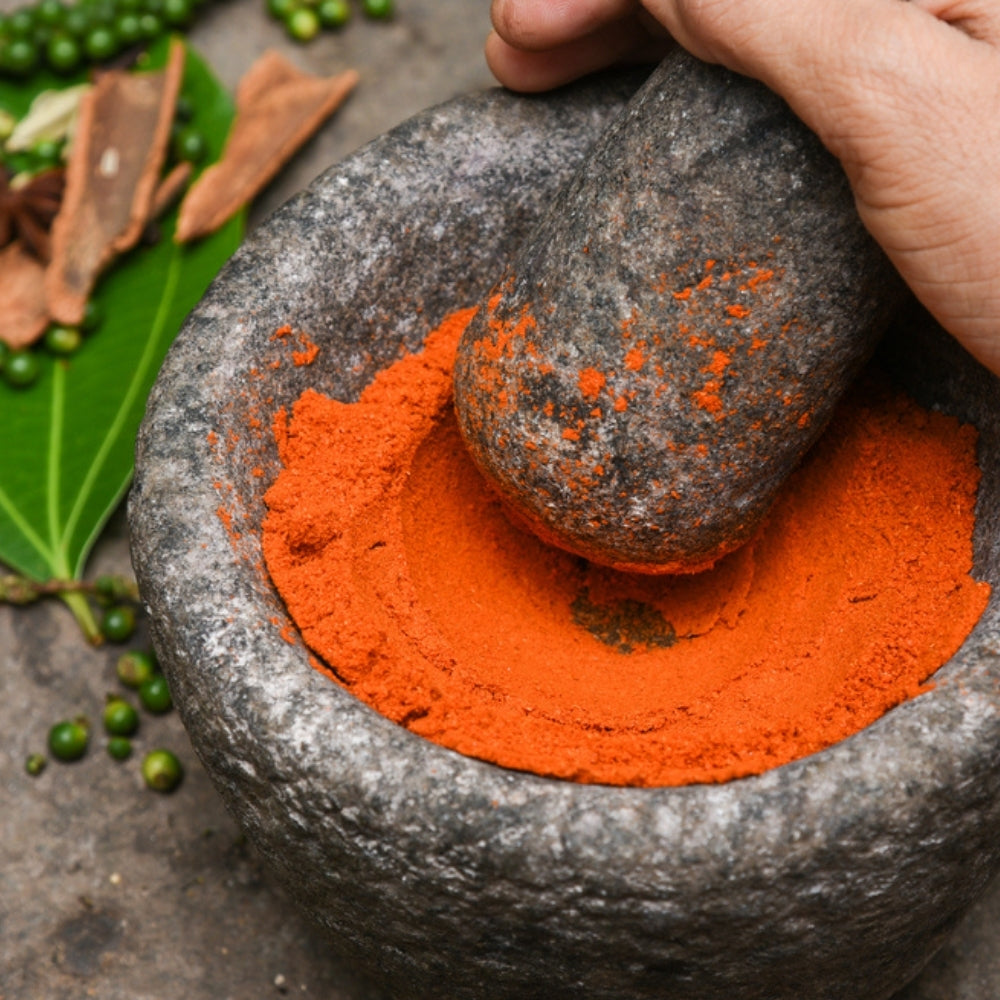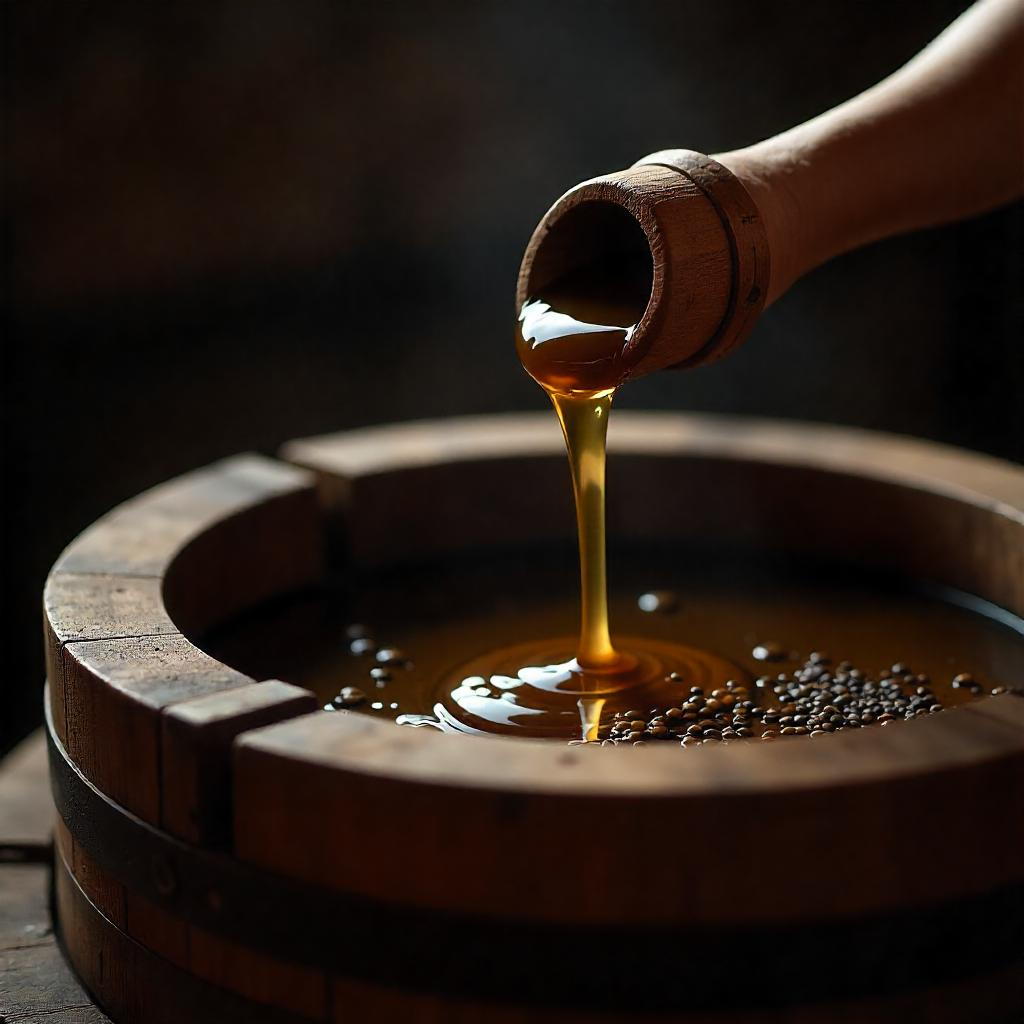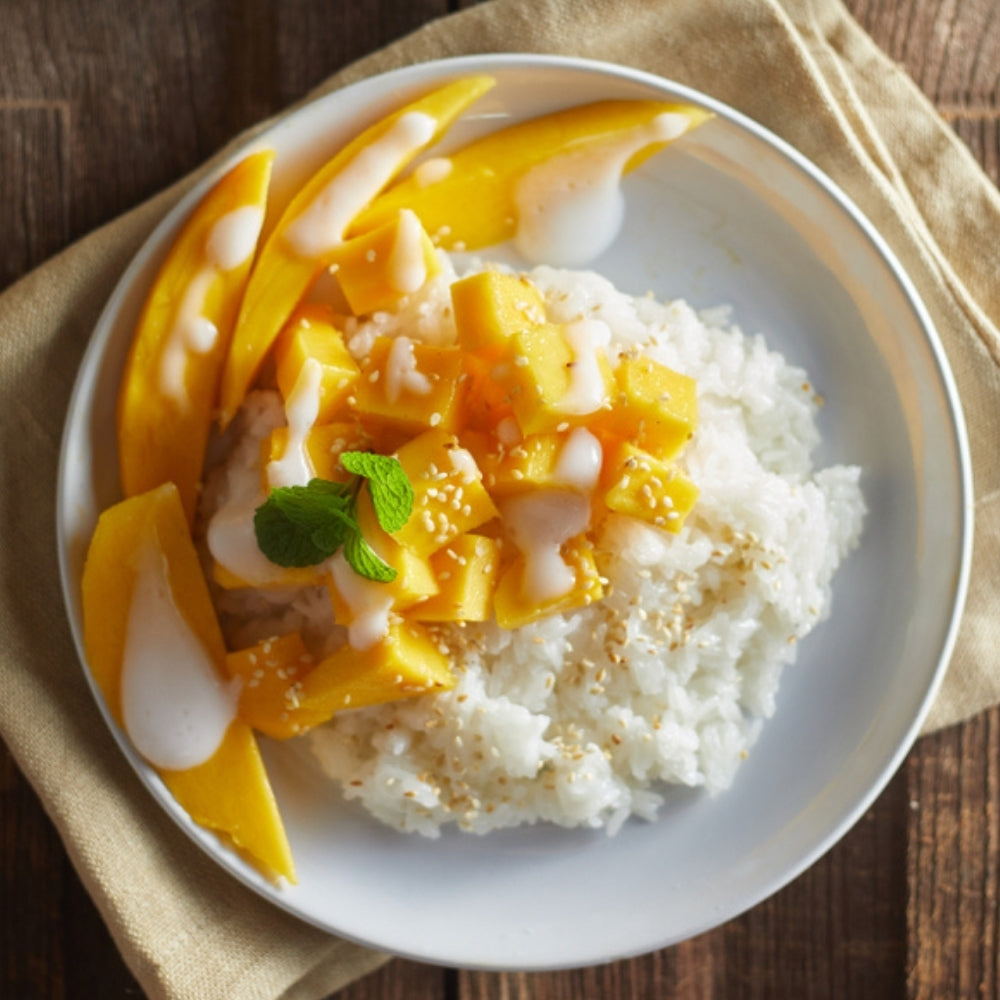You can follow every recipe to the letter, use the best produce, even plate it perfectly—but if your dish still tastes flat, the issue is almost always the same: your spices.
Spices aren’t seasoning. They’re soul. They’re what make dal feel like home, what turn curry into memory, and what keep people at the table long after the meal is done.
Yet most of what we call spice today is industrial filler—powders that lost their character long before they hit your kitchen.
This guide is here to change that. No marketing, no fluff—just the truth about why hand-pounded spices matter, and why they taste, smell, and feel different.
Spice Is More Than Flavour
Spices are emotional. They’re deeply cultural. They carry memory, place, and care.
They remind us of:
- A grandmother’s hands dry-roasting whole spices before grinding garam masala.
- The turmeric that stained your clothes every harvest season.
- The cardamom pod crushed for chai on slow afternoons.
But flavour alone doesn’t define a good spice. What matters just as much is how it’s grown, when it’s harvested, and most overlooked of all—where it's grown & how it’s ground.
Why Most Store-Bought Spices Fail
Walk into any grocery store and you’ll find shelves full of shiny packets. But inside?
- Spices grown for volume, not flavour.
- Overheated drying methods that dull potency.
- Machine grinding that strips essential oils.
- Blends that mask flatness with aggressive heat or colour.
The result? Spice that looks the part but smells like nothing and tastes like dust.
It’s not just about what’s lost—it’s about what was never preserved to begin with.
What Hand-Pounding Actually Does
Heat-Free = Flavour-Intact
Machine grinding builds friction, and friction builds heat. That heat destroys the volatile oils in spices—the very compounds that make pepper pungent, cardamom fresh, and turmeric earthy.
Hand-pounding is slower, and that’s the point. It doesn’t cook the spice while crushing it. It lets it open gently.
Texture That Tells a Story
Uniform powders might look clean, but they’re often overprocessed and lifeless. Hand-pounded spices retain natural irregularity. The texture isn’t accidental—it’s expressive.
You don’t want every bite to be the same. You want little surprises:
- A crack of black pepper that cuts through richness.
- A burst of real cumin in a spoon of tadka.
- A trace of cinnamon that didn’t disappear.
- Real spices don’t blend in. They stand out..
Why Origin Still Matters
In a world of bulk procurement and cross-border spice trading, most brands can’t—or won’t—tell you where your spice comes from. But origin changes everything.
Turmeric from Meghalaya’s red soil is higher in curcumin and deeper in flavour.
Cardamom from Idukki has a cooler, greener intensity than commercial pods.
Saffron from Pampore carries more aroma, more crocin, and richer colour than Iranian or Spanish varieties.
Where a spice is grown affects its oil content, density, pungency, and even its role in regional cooking. This is the foundation of flavour.
What Colonisation Did to Indian Spices
India’s spice systems weren’t always fragmented, flattened, or commodified.
For centuries, spice was both cultural currency and daily practice. Every home had its own blend, its own ritual of roasting, grinding, pounding. Every region had spices it was known for—not just in name, but in method and timing.
Colonisation didn’t just export Indian spices. It extracted them—stripped them of context, standardised them for European palates, and turned them into bulk goods.
The result? A global market where Indian turmeric is sold back to Indians in processed packets, and where hand-pounding is called “artisanal” instead of just how things were always done. We’re not romanticising the past. We’re just returning to what made sense before we were told to rush it.
From Farm to Plate: The Zama Process
We focus on single-origin spices—grown where they belong, harvested when they’re ready, and pounded in small batches without machines. No electricity. No blades. No heating. Just traditional methods, slow movements, and spices ground by hand. Each batch is processed fresh—we believe in giving each ingredient room to speak.
Spices That Speak for Themselves:
True Ceylon Cinnamon – Full rolls that are sweet, warm, clean.
Allepey Green Cardamom – Cooling, full-bodied, refreshing
Kashmiri Red Chilli – Vibrant, pleasant heat, adds body, not burn.
Malabar Black Pepper – Sharp, coarsely pounded, leaves a real bite.
Lakadong Turmeric – Grown in Meghalaya, naturally high curcumin, bright and earthy.
Kashmiri Mongra Saffron – Full red stigmas from each flower, rich, floral, intense.
Each one is a product of its origin!!
What You Feel When You Cook With Them
They behave differently. Hand-pounded spices bloom slowly in oil and water.
They smell like something. You’ll notice the moment you open the jar.
They create layers. Instead of one-dimensional spice heat, you get build, balance, and finish.
And above all, they feel real—like something someone grew with care.
Spice Isn’t a Shortcut. It’s a Standard.
We’ve been told for years that convenience matters more than quality. That spice is about colour, not origin. That flavour is just one note on a packet label.
But the truth is simpler: real spice takes time. It tastes better. It performs better. It respects your food, your health, and the people who grow it.
Hand-pounded isn’t premium. It’s just proper. And in the right hands, it’s what makes your cooking unforgettable.
FAQs
Q. What’s the real difference between hand-pounded and machine-ground spices?
A: Heat. Machine grinding creates friction that kills flavour. Hand-pounding keeps essential oils intact, resulting in deeper aroma and longer-lasting flavour.
Q. Do hand-pounded spices lose potency faster?
A: No. In fact, because they retain their oils, they often stay fresh longer—as long as they’re stored well.
Q. Are Zama’s spices certified organic?
A: Yes. All of our spices are grown without synthetic pesticides or chemical fertilisers, and we work directly with farmers who use traditional, natural methods.
Q. Can I use hand-pounded spices every day?
A: Absolutely. They’re better for daily use because you need less—they’re more potent, more nuanced, and free from additives.
Q. How should I store them?
A: Keep them in airtight glass containers, away from heat, light, and moisture. Avoid plastic, and don’t store above the stove.









